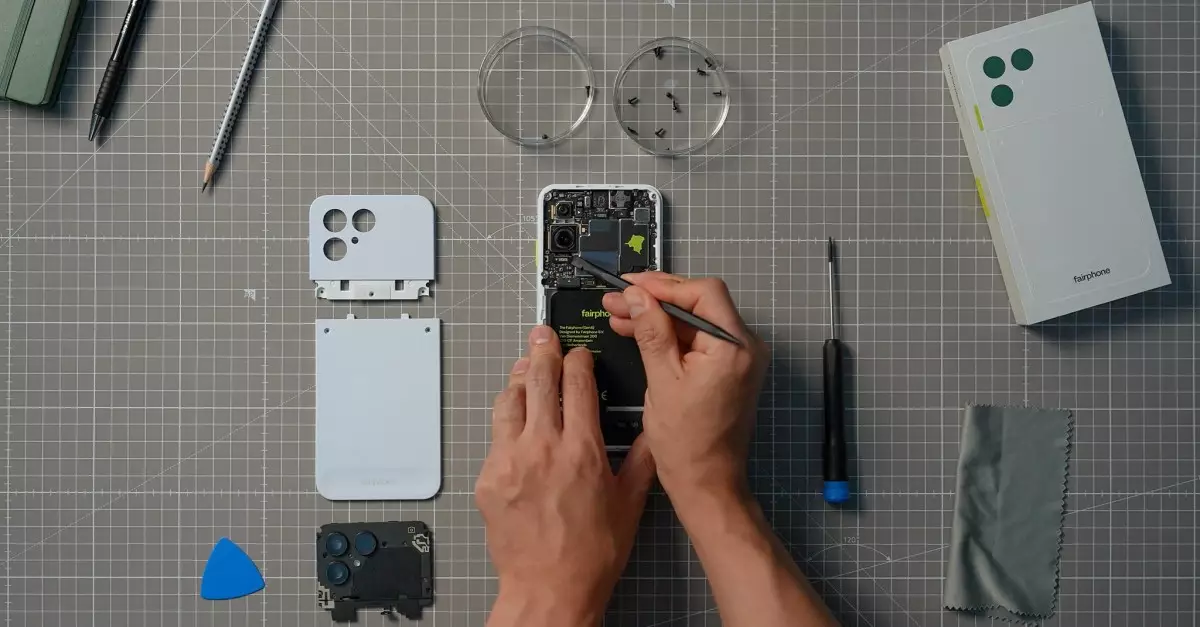The latest iteration of Fairphone, the Fairphone 6, stands out not just as another smartphone but as a manifesto for sustainable, long-term utility. In an era where smartphones are often disposable, Fairphone boldly champions repairability and user empowerment. Unlike many flagship devices that prioritize sleekness over serviceability, the Fairphone 6 demonstrates that technological innovation and ecological responsibility can go hand in hand. Its design ethos is centered around longevity, allowing users to extend the device’s lifespan far beyond industry norms.
What distinguishes this model is its modular architecture, which has continually set industry standards. Despite being smaller and more streamlined than previous versions, the Fairphone 6 retains an extraordinary level of repairability. The key lies in its minimal screws—only seven T5 Torx screws separate the user from replacing a battery, camera sensor, or port. The reduction from traditional, often glued components indicates a moved-away from planned obsolescence. Fairphone has shown that durability doesn’t have to compromise on modern aesthetics or compactness, asserting itself as a trailblazer for environmental ethics in smartphone manufacturing.
Challenging the Notion of Repairability and Performance
It’s somewhat paradoxical that the Fairphone 6, despite earning top marks for repairability, sacrifices some high-end specifications typical of flagship models. Its dual-camera setup is quite basic, and the Snapdragon 7S Gen 3 chipset is far from the most powerful on the market. The USB-C port still employs USB 2.0 technology, which might disappoint users seeking blazing-fast data transfer. However, these compromises raise a crucial question: Should we always equate performance with sustainability?
In my perspective, the answer leans heavily towards “no.” The value of the Fairphone 6 isn’t rooted solely in raw power or cutting-edge features but rather in the profound message it sends about consumer responsibility. This device offers a balanced trade-off—less bling, more sustainability. It challenges the cultural obsession with superficial specs, emphasizing that longevity, reparability, and eco-consciousness are equally, if not more, important.
It’s also noteworthy that Fairphone chose not to incorporate excessive glue in most parts, relying instead on screws to enable users to perform repairs with minimal expertise. The only glued component is the mainboard, which is a wise decision considering its delicate nature. This focus on user-friendly repairability redefines what it means to own a modern smartphone. By making it feasible for users to replace parts themselves, Fairphone fosters a culture of repair rather than replacement.
Beyond Repairability: Sustainability and Ethical Considerations
The Fairphone 6’s commitment to sustainability extends into its support infrastructure. With a guarantee of seven years of Android OS updates and an eight-year security patching schedule, it defies the disposable mentality that dominates the industry. The inclusion of a five-year warranty and a loyalty program further incentivizes consumers to opt for repairs over replacements, reducing electronic waste globally.
Moreover, the availability of replacement parts from Fairphone and iFixit reinforces a model of circular economy principles. Users are encouraged to repair and upgrade instead of discard. The phone’s exterior design with a swappable backplate allows for modular accessories, offering personalization without increasing waste.
The device’s IP55 rating—resistant to dust and water—might not be the industry’s best, but it’s impressive considering the screw-based construction rather than glue or waterproofing coatings. This design choice aligns with the philosophy that user-repairability should not come at the expense of durability or resistance.
However, affordability remains a contentious issue. Priced at €599 in Europe and $899 in the US, the Fairphone 6 carries a premium that some might see as steep. Yet, when viewed through the lens of sustainability, this cost can be justified. Investing in a device designed to last and be repaired reduces future expenses and environmental impact, making it a prudent choice for environmentally conscious consumers.
The Fairphone 6 not only breaks the mold technically but also philosophically. It challenges manufacturers to reconsider the true value of a smartphone—prioritizing repairability, longevity, and ethical sourcing over just the latest bells and whistles. Although it may not satisfy all power users, its emergence signals a needed shift in industry standards—one where responsibility and sustainability are core features, not afterthoughts.

